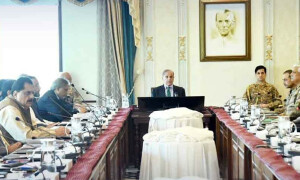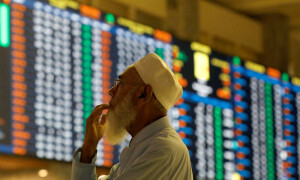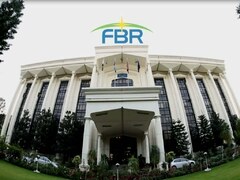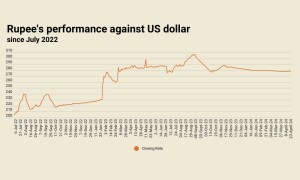There is a sense of panic at the SBP (State Bank of Pakistan) and MoF (Ministry of Finance) over curtailing growing import bill. SBP gross reserves are down by $3.8 billion in the last ten weeks, declining by $691 million in last week alone. There are emergency meetings taking place on how to curb imports.
The bill may approach up to $7 billion (on PBS data) for November 2021. With travel opening, there are additional risks that remittances growth may be tapered. The main worry is the current account slippage.
However, not much can be done by imposing ban on non-essential imports. It is an outcome of policy choices which were made last year and this budget. The incorrect implicit assumption is that commodity prices would remain low. It didn’t happen, and now reality is hitting back hard.
The government got a good run in 2020-21. There was a natural bounce-back of economy. The stimuli offered by the SBP were too generous. Interest rates were down to 7 percent. Commodity prices were low. The currency appreciated to touch PKR/USD of 152 in May 2021.
On top of it, the zest at ministry of finance gave a fresh wave of exuberance in the 2021-22 budget. Then there is demand due to ‘wealth effect’ on real estate realized and unrealized capital gains – thanks to the amnesty scheme.
Markets responded to these factors as demand started to pick up. Later, commodity prices started to rise as well. Freight cost moved up abnormally. All such factors added up to growing imports. There were early signs of current account slippage in May 2021.
The proactive approach could have been to start thinking of belt tightening at that time. But the government was busy in announcing a ‘loot sale’ budget. SBP also allowed the currency to appreciate. There was no urgency at monetary policy committee to tighten in May or July.
The policy response impact comes with a lag. People make decisions and then place import orders. The numbers start reflecting after 60-90 days. And in many cases the time lag is even larger. Fully monetary policy transmission takes place in 6-18 months.
The government cannot do much to let the number to cool down in weeks. SBP’s first line of defense is exchange rate. It has already slipped down by 15 percent from May’s high. The policy rate has increased by 175 bps (basis points). SBP enhanced cash reserves requirement (CRR) for banks by 1 percent. There are additional curbs on consumer finance – mainly autos. Moreover, there is 100 percent cash margin requirement on a number of imported items. 6M-Kibor increased by 275 bps in the last ten weeks.
The impact of all these steps will take some time to come. The message for the government is to not go for an overkill. MoF or SBP cannot fight with rising commodity prices. Past 20 years’ data clearly shows that imports and commodity prices growth move in tandem. Last year, low prices permitted the bonanza. This year it’s time to payback. Nonetheless, the response to higher prices is to curb demand. SBP has moved the policy anchor to tightening. It will have its impact in a few months.
The international commodity prices are mean-reverting. Fear of Covid’s fifth wave could trigger the reverse movement earlier. On Friday, there were signs of easing oil and coal prices. Let’s see how long this may sustain. Many economies are worried due to high inflation.
Major oil importing countries including the US, China, the UK, Japan, and India are deciding on using their petroleum strategic reserves to lower the demand from the international market. There are signs of freight costs coming down as well. Price pressures are likely to ease post-winters. At the same time, the impact of monetary tightening will show in numbers as well. There might not be any significant savings from banning CBUs cars or other items. People are worried over higher car imports.
The CBU car imports stood at $89 million in the last three months. Out of it approximately $50 million (4,000-4,500 cars) is due to import of MG HS. These cars were booked earlier and now the delivery is coming. There is a backlog of another 2,000 cars ($23 million).
No new demand is as such in this car. Then in EVs – the import bill is not significant. If the government cuts on CKD imports by imposing higher duty, it would go against the upcoming auto policy. Similarly, the impact of imposing a cash margin of 100 percent is not significant. 114 new items are added, and these do not even make up 2 percent of total imports.
In food, the bigger chunk is palm oil, and here the price effect is growing the number. Same is the case of petroleum, steel, and other products. The government cannot ban these. And if duties increase, these will put pressure on prices. Most of these items’ imports would slow down with monetary transmission impact.
Nonetheless, the rapid fall in reserves is sending jitters to the markets and authorities are getting cold feet. The concentration should be on building the financing needs to bridge the external financing. There are plans of getting $8-9 billion in the couple of months including Saudi deposits and oil facility, IMF money, Sukuk issuance and flows from others. The lesson to learn is to not focus on ambitious economic growth without instilling structural reforms. And not much to take home on this.
Copyright Business Recorder, 2021
Ali Khizar is the Head of Research at Business Recorder. His Twitter handle is @AliKhizar























Comments
Comments are closed.